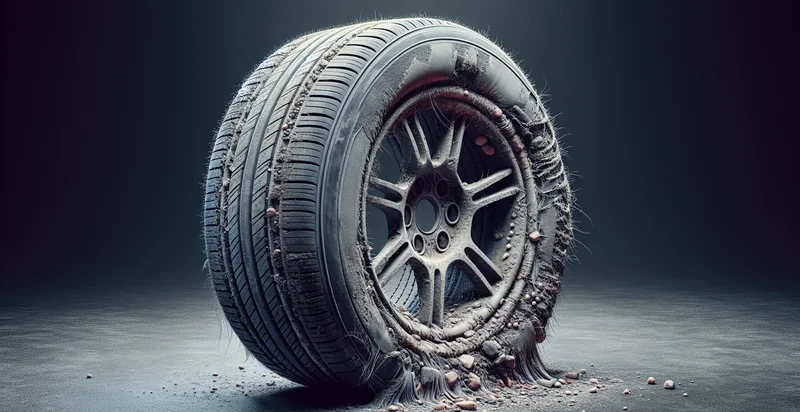Identify tire wear
using AI
Below is a free classifier to identify tire wear. Just upload your image, and our AI will predict the level of wear on different types of tires. - in just seconds.

Contact us for API access
Or, use Nyckel to build highly-accurate custom classifiers in just minutes. No PhD required.
Get started
import nyckel
credentials = nyckel.Credentials("YOUR_CLIENT_ID", "YOUR_CLIENT_SECRET")
nyckel.invoke("tire-wear", "your_image_url", credentials)
fetch('https://www.nyckel.com/v1/functions/tire-wear/invoke', {
method: 'POST',
headers: {
'Authorization': 'Bearer ' + 'YOUR_BEARER_TOKEN',
'Content-Type': 'application/json',
},
body: JSON.stringify(
{"data": "your_image_url"}
)
})
.then(response => response.json())
.then(data => console.log(data));
curl -X POST \
-H "Content-Type: application/json" \
-H "Authorization: Bearer YOUR_BEARER_TOKEN" \
-d '{"data": "your_image_url"}' \
https://www.nyckel.com/v1/functions/tire-wear/invoke
How this classifier works
To start, upload your image. Our AI tool will then predict the level of wear on different types of tires..
This pretrained image model uses a Nyckel-created dataset and has 14 labels, including Bald Spots, Bubbles Present, Cracks Present, Flat Spots, Good Tread, Misalignment Wear, Moderate Wear, New Tread, Severe Wear and Sidewall Damage.
We'll also show a confidence score (the higher the number, the more confident the AI model is around the level of wear on different types of tires.).
Whether you're just curious or building tire wear detection into your application, we hope our classifier proves helpful.
Related Classifiers
Need to identify tire wear at scale?
Get API or Zapier access to this classifier for free. It's perfect for:
- Fleet Management Optimization: Fleet operators can utilize the tire wear identifier to monitor the condition of tires across their vehicles. By identifying tires that show signs of excessive wear, operators can schedule maintenance more efficiently, reduce breakdowns, and enhance overall fleet performance.
- Predictive Maintenance Scheduling: Automotive service centers can leverage the tire wear classification function to implement predictive maintenance programs. By analyzing tire wear patterns, service providers can proactively advise customers on timely tire replacements, thereby preventing accidents and improving vehicle safety.
- E-commerce Product Recommendations: Online automotive retailers can enhance customer experience by integrating the tire wear identifier into their platforms. When customers purchase tires, the system can analyze their current tire conditions and suggest options that meet their needs, ultimately driving sales and customer satisfaction.
- Insurance Risk Assessment: Insurance companies can benefit from this technology by evaluating the wear of tires in claim assessments. By acquiring tire condition data, insurers can better assess risk and decide on premiums, which could lead to fairer and more accurate pricing for policyholders.
- Tire Retail Waste Reduction: Tire manufacturers can use tire wear identification to refine their production processes and improve sustainable practices. By understanding wear patterns, companies can develop tires that last longer, reducing waste and promoting eco-friendly policies within the industry.
- Road Safety Awareness Campaigns: Government and safety organizations can implement tire wear identification in public awareness campaigns. By educating drivers on the importance of tire maintenance and using real-time data to demonstrate wear impacts, they can effectively promote safe driving behaviors and reduce road accidents.
- Vehicle Performance Analytics: Automotive component manufacturers can use tire wear data to analyze the performance of their products under different conditions. By correlating tire wear with various driving habits and environmental factors, they can improve product design, contributing to longer-lasting tires and better driving performance.


